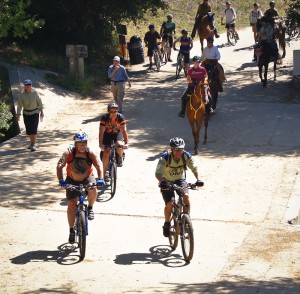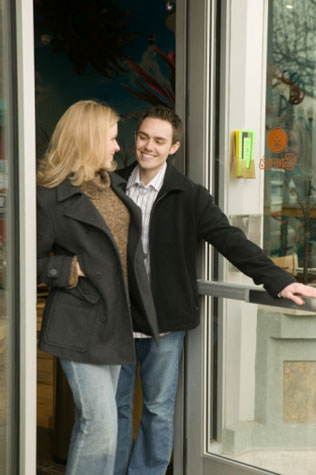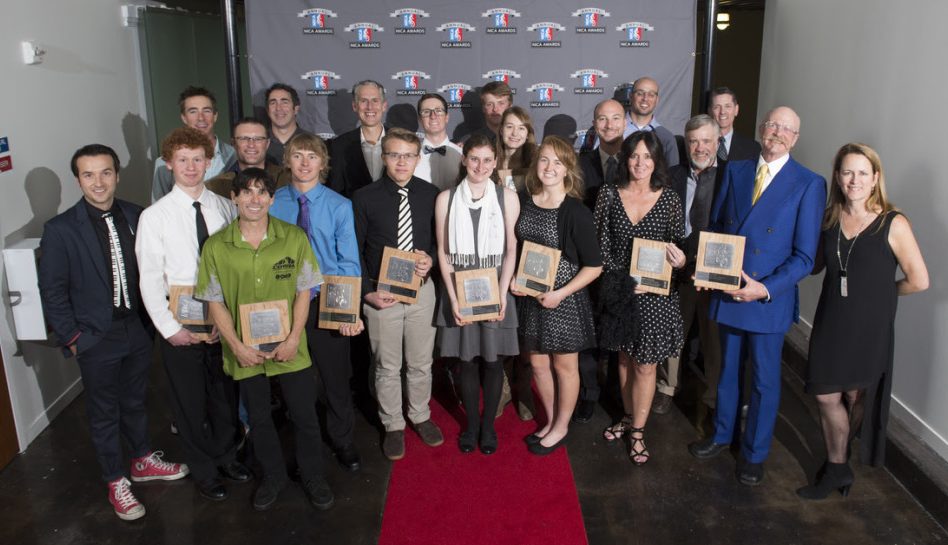
2015 NICA Award Recipients. Top row: Todd Wells, Hal Miller, Scott Armstrong, Austin McInerny, Jeremy Call, Kade Brantington, Hannah Heydinger, Robert Parks, Mark LaPaglia, and Mike Perry. Bottom Row: Lucas Euser, Liam Ruff, Steve Messer, Nash Dory, Preston Bagley-Gurtner, Esmée DeBarssi, Zoë Mae Dunn, Kathy Parks, Robert Kertesz, Gary Fisher and Lauren Duensing. Photo credit: Karl Nielsen.
On January 30, 2016, Steve Messer was the honored recipient of the National Interscholastic Cycling Association’s Community Impact Award, sponsored by QBP. The award came as a complete surprise to CORBA’s President, and was equally unexpected by SoCal League director Matt Gunnell, with whom Steve and CORBA have work since the league’s infancy to support High School Mountain Biking and getting more kids on bikes.
Read about all of NICA’s 2015 Award Recipients at Nationalmtb.org
Sixteen outstanding participants in high school cycling leagues across the U.S. were honored at the 2015 National Interscholastic Cycling Association (NICA) Awards, held at Clif Bar & Company Headquarters, in Emeryville, California.
NICA presented awards in ten categories to individuals and organizations considered to be the most outstanding student-athletes, dedicated coaches, and the most supportive volunteers and sponsors to have helped advance the high school mountain biking movement over the past year. Photos of the entire event by by Karl Nielsen are available, and a short recap video will be posted soon.
Steve has been involved since a young riding buddy introduced him to high school mountain biking as the League was beginning its second season in 2010. The SoCal league’s first season had proved the NorCal model could be replicated, and led to the formation of NICA. Steve has been involved in getting student-athletes and teams out doing trailwork, doing major Station Fire restoration projects, helping secure venues for high school league races, and calling on High School teams to use their voice in advocacy efforts.
Steve was introduced by Matt Gunnell, director of the SoCal High School Cycling League, with whom Steve has worked, strategized, and even presented at the IMBA World Summit on the synergies between high school mountain biking and advocacy.
Matt’s introduction to Steve:
I am very honored to present the Quality Bicycle Products Community Impact Award to Steve Messer. Reading from the nomination submission for this award, I quote…”Steve does it all. He’s an inspiration. He’s indefatigable. He’s designed and built courses, mentored coaches and students, helped with administration, helped launch new teams, established partnerships between teams and IMBA chapters to do trail work, and more. This is just a sketch of his contributions. His commitment to the SoCal League is immense, and he still makes time for CORBA/IMBA advocacy leadership as well as general road bike advocacy. With 1000 Steves, mountain bike opportunities would be improved a thousand times over. Sadly, there’s only one of him.” It is with great pleasure that I present this award to the one and only Steve Messer!
Steve’s Acceptance Speech:
What a privilege to be here at the Clif Bar headquarters surrounded by so many people dedicated to getting more kids on bikes.
Thank you Matt for that introduction, and thank you so much NICA for this unexpected honor. There are many people I have to thank, especially the teams, coaches and volunteers of the SoCal League, and NICA for thier leadership. I know there were other equally-deserving nominees whose work is just as impactful and important as what I’ve been trying to accomplish. I’m just one of many, many mountain biking advocates around the country, striving to preserve and create great mountain biking experiences for our future generations.
Just five months after 76 SoCal League student-athletes raced the inaugural SoCal finals in 2009, and NICA was just getting going, our local National Forest and most of our favorite trails were destroyed by the Station Fire and subsequent El Niño storms. We had this burgeoning high school sport, and most of the trails I had ridden for more than 25 years were suddenly closed or gone. The Mountain biking community was devastated. My motivation to restore the trails, and some forward-thinking coaches who were already doing trailwork, grew into a serendipitous partnership between CORBA and local high school teams that needed places to ride and train.
Working with a half-dozen or more local high school teams and their coaches, boy scout troops, and other groups, we collectively restored most of the front-country trails within three years of the fire. We’re still working on restoration projects, and continue to have student-athletes joining us. In fact we have two teams coming out next weekend for trailwork. Not coincidentally, the recipient for the Distinguished Alumni Award, Jeremy Call, will be bringing out his team next weekend. It’s a win-win for the teams, for our public lands and for all trail users.
Early on it became obvious to me that this was the next generation of land and trail stewards, advocates, and even land managers. Restoring trails and giving these student-athletes a place not only to ride and train, but to develop a deep connection to the mountains and the Forest as I have been fortunate enough to experience, is its own reward. The most gratifying aspect of all this is that I’m seeing the passion I have for trails and our public lands instilled in so many young riders.
Having an increased presence of well-behaved, responsible trail users that NICA’s leagues are producing is really helping foster more responsible riding. The equestrian community in our area certainly has noticed Slomo Bro is helping spread the message that responsible riding is a form of advocacy.
Within the high school mountain biking family, I’ve made some of my closest friends, my strongest supporters and allies, and feel a true community spirit. I’m awed to feel this trail love spreading throughout this community. Seeing the types of partnerships CORBA began to develop, now built upon and expanded as the nationwide Teen Trail Corps Initiative with IMBA and REI gives me great confidence in the future of our sport, our trails and the places we ride.
Again, I’m truly honored by this recognition, especially since it’s for something I just love doing. Thank you NICA, the SoCal League, QBP for sponsoring this award, all the volunteers who have helped me along the way, my spouse who is so supportive of what I’m doing, and everyone who has contributed to this incredible journey.”
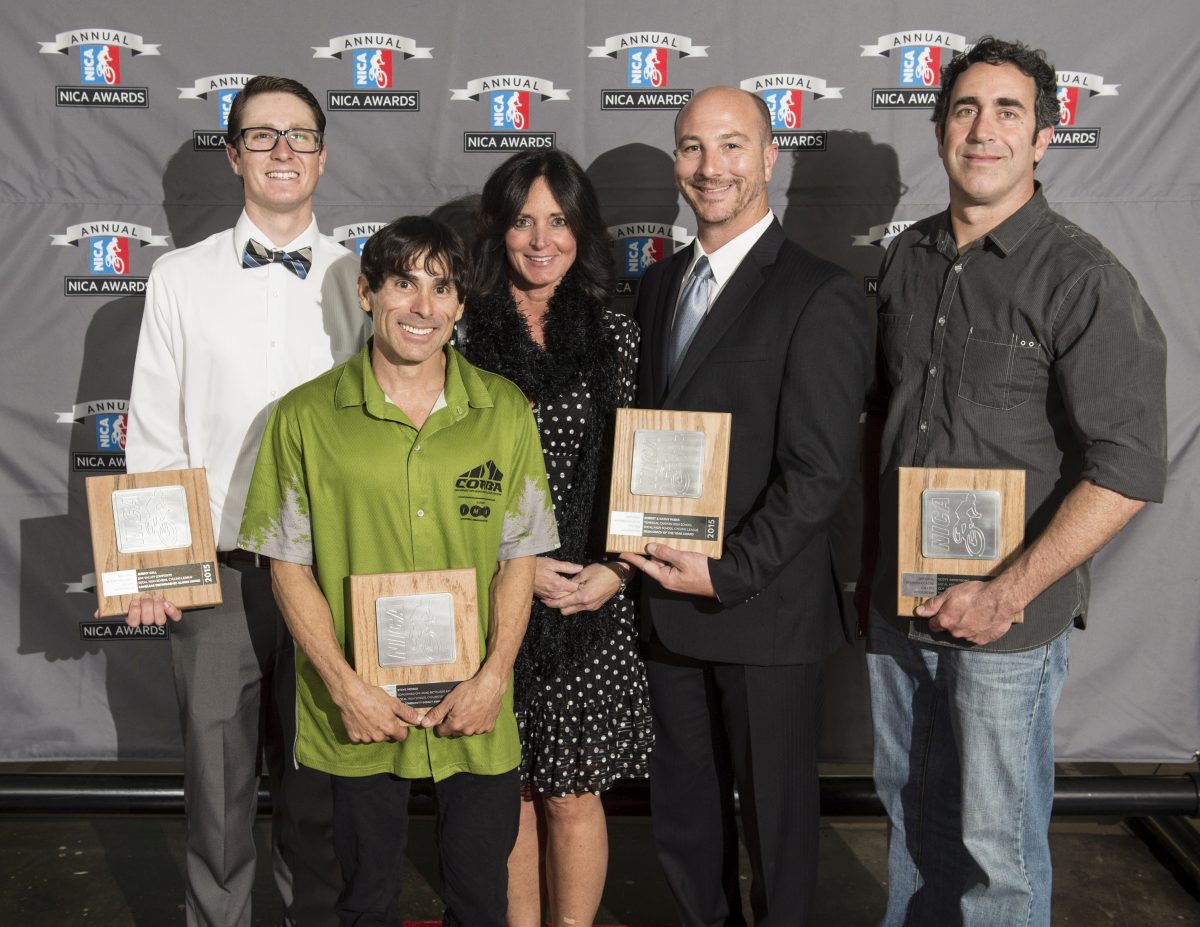
SoCal was well represented: Jeremy Call, Steve Messer, Kathy Parks, Robert Parks, and Scott Armstrong. Photo by Karl Nielsen
Southern California was well represented at the Awards, with Scott Armstrong, the SoCal League’s Chief Course Marshall receiving the Clif Bar Volunteer Service Award, Coach Jeremy Call from Simi Composite team receiving the Camelbak Distinguished Alumni Award (and then bringing his team out for CORBA trailwork a week later!), and coaches Robert and Kathy Parks of the Temescal Canyon High School receiving the SRAM Coach of the Year award.
NICA leagues are now up and running in 19 states, with more coming online each year. There are now over 10,000 student-athletes participating in middle school and high school mountain biking races around the country. To learn more, visit http://SoCaldirt.org, or http://Nationalmtb.org.



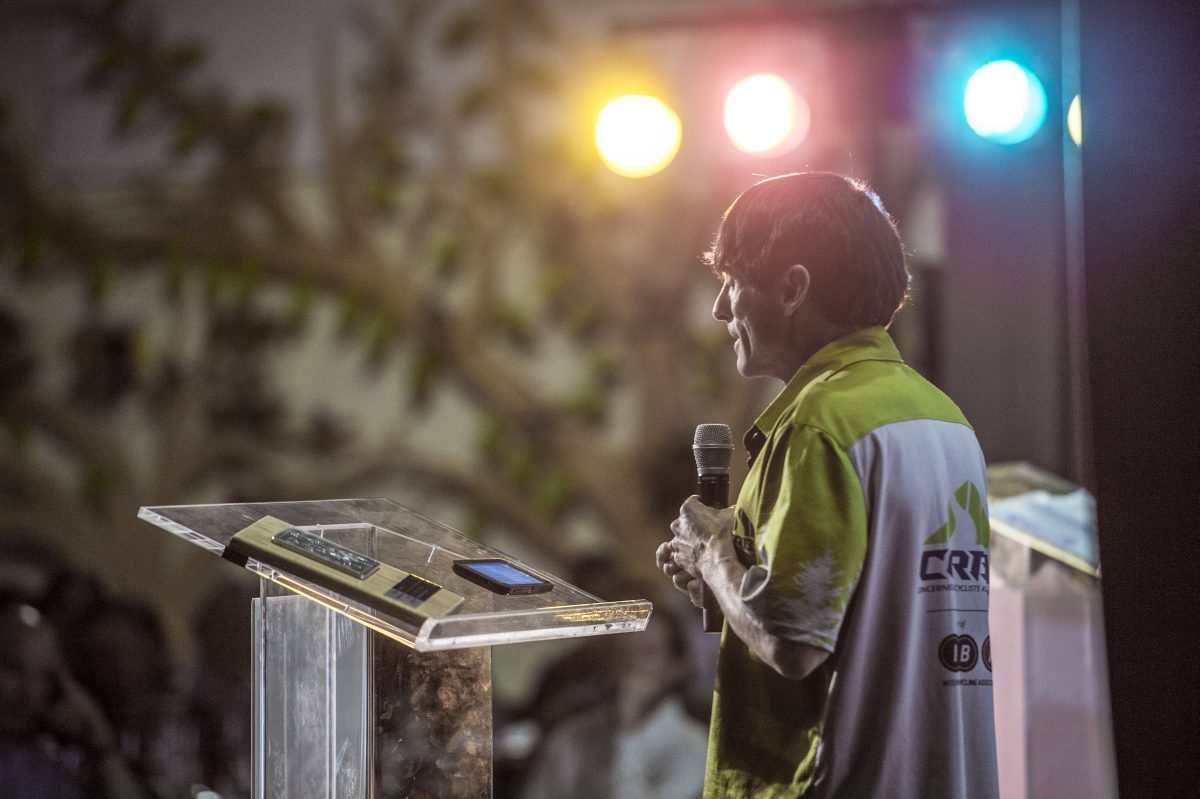
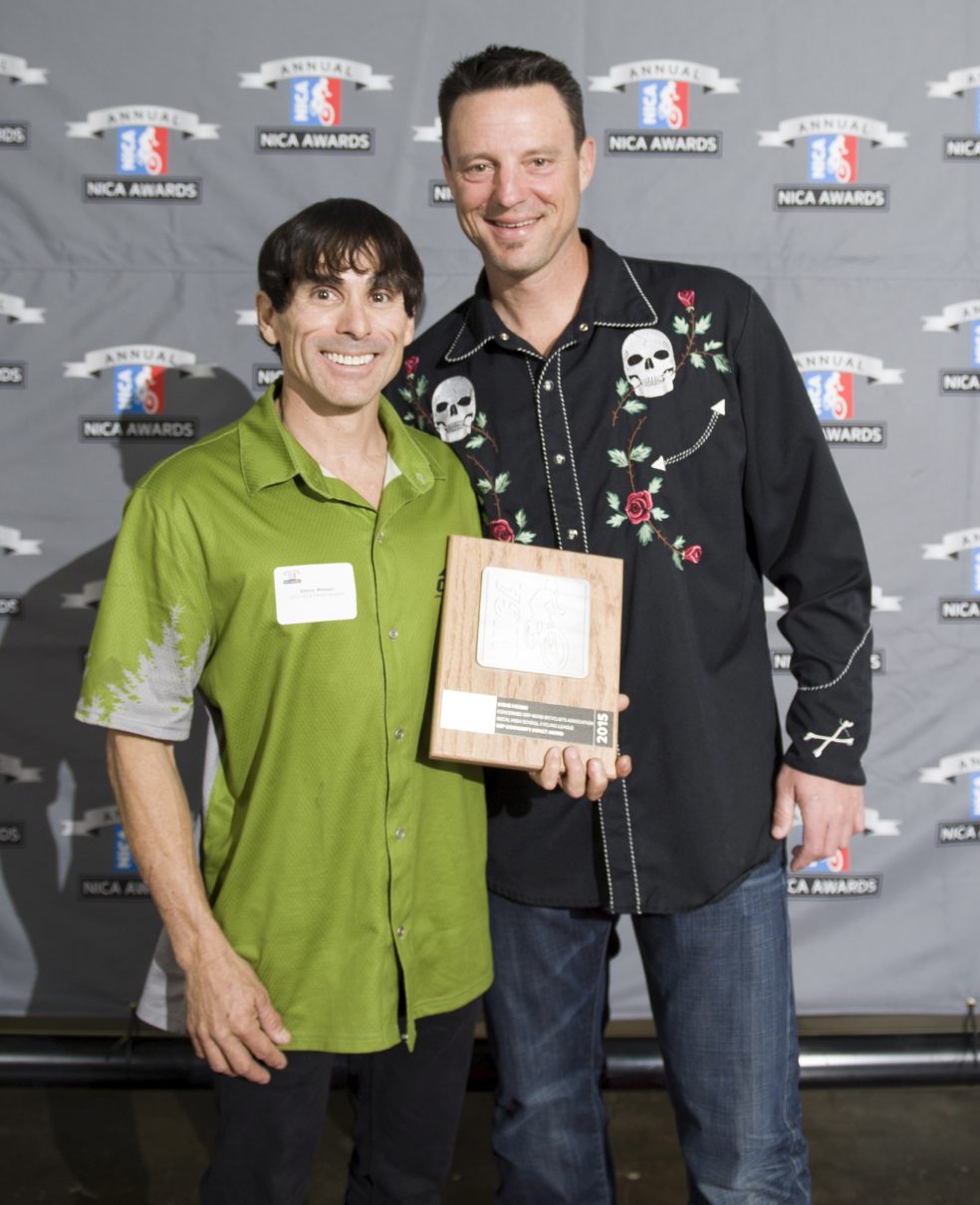
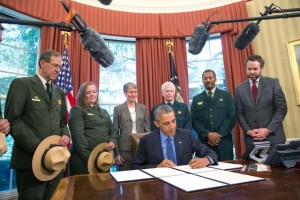
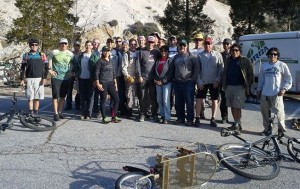
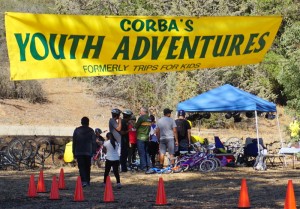

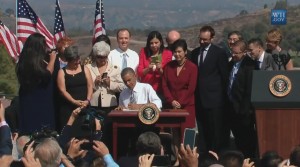
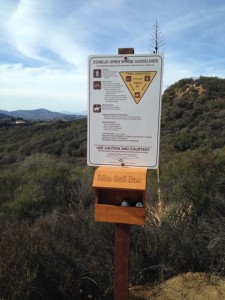
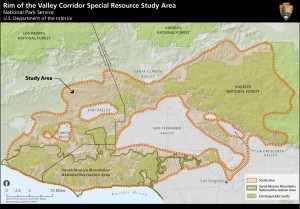
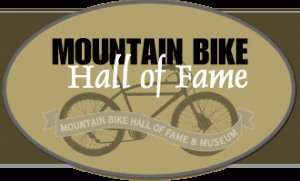
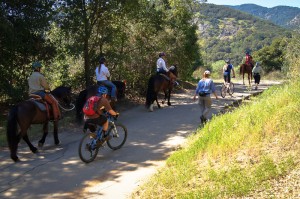
 Contrary to popular belief, the North Rim of the Grand Canyon is not a desert. The Rainbow Rim trail sits at 8,000 feet, winding through forests of ponderosa pine and aspen trees. Users can expect to see abundant wildlife, including the rare Kaibab Squirrel, a white-tailed, tufted-eared critter that only lives in the 40-mile radius of the Kaibab Plateau. The forest is also home to wild turkeys, often spotted running in packs through the trees.
Contrary to popular belief, the North Rim of the Grand Canyon is not a desert. The Rainbow Rim trail sits at 8,000 feet, winding through forests of ponderosa pine and aspen trees. Users can expect to see abundant wildlife, including the rare Kaibab Squirrel, a white-tailed, tufted-eared critter that only lives in the 40-mile radius of the Kaibab Plateau. The forest is also home to wild turkeys, often spotted running in packs through the trees.